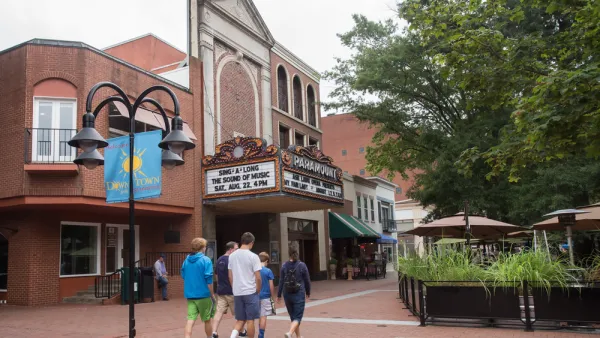A retired city planner takes a position against "lot splitting," or allowing more than one unit on properties zones for single-family residential as it's known in Toronto.

Cherise Burda, of the Ryerson City Building Institute, and David Godley, a retired city planner, contribute dueling opinions in this column on the subject of "lot splitting" for density in the city of Toronto.
"Dividing city lots to build two houses on one property is increasingly common and controversial in Toronto," explains the introduction to the article. "Is this good planning in light of sky high housing prices and a lack of land for development?"
Burda takes the position of proponent for lot splitting, starting with the argument that single-family zoning creates exclusion in a time of declining housing affordability.
"Over the next 25 years we are expecting about 1 million new neighbours. And, over the next 50 years Toronto’s population is on track to double. In simpler terms anywhere we currently have one housing unit we will need two," writes Burda.
The contrarian argument sets to debunk what Godley describes as a myth of land shortage in Toronto.
There are enough housing units approved to last 20 years in Toronto with very large numbers of applications in the pipeline. Theoretically, all the needed housing can be accommodated along main streets. This is the appropriate place for co-ops, plexes and rooming houses, as well as innovative housing. There are large tracts of land with development potential.
The context for the discussion is set by a motion proposed recently by Deputy Mayor Ana Bailão and Mayor John Tory to study opportunities to accommodate new forms of housing in residential neighborhoods. The trend toward limiting or ending single-family zoning has been gaining steam, with a new law in Oregon and a new comprehensive plan in Minneapolis leading the way.
FULL STORY: Is lot splitting a good way to increase housing density?

National Parks Layoffs Will Cause Communities to Lose Billions
Thousands of essential park workers were laid off this week, just before the busy spring break season.

Retro-silient?: America’s First “Eco-burb,” The Woodlands Turns 50
A master-planned community north of Houston offers lessons on green infrastructure and resilient design, but falls short of its founder’s lofty affordability and walkability goals.

Delivering for America Plan Will Downgrade Mail Service in at Least 49.5 Percent of Zip Codes
Republican and Democrat lawmakers criticize the plan for its disproportionate negative impact on rural communities.

Test News Post 1
This is a summary

Test News Headline 46
Test for the image on the front page.

Balancing Bombs and Butterflies: How the National Guard Protects a Rare Species
The National Guard at Fort Indiantown Gap uses GIS technology and land management strategies to balance military training with conservation efforts, ensuring the survival of the rare eastern regal fritillary butterfly.
Urban Design for Planners 1: Software Tools
This six-course series explores essential urban design concepts using open source software and equips planners with the tools they need to participate fully in the urban design process.
Planning for Universal Design
Learn the tools for implementing Universal Design in planning regulations.
EMC Planning Group, Inc.
Planetizen
Planetizen
Mpact (formerly Rail~Volution)
Great Falls Development Authority, Inc.
HUDs Office of Policy Development and Research
NYU Wagner Graduate School of Public Service





























